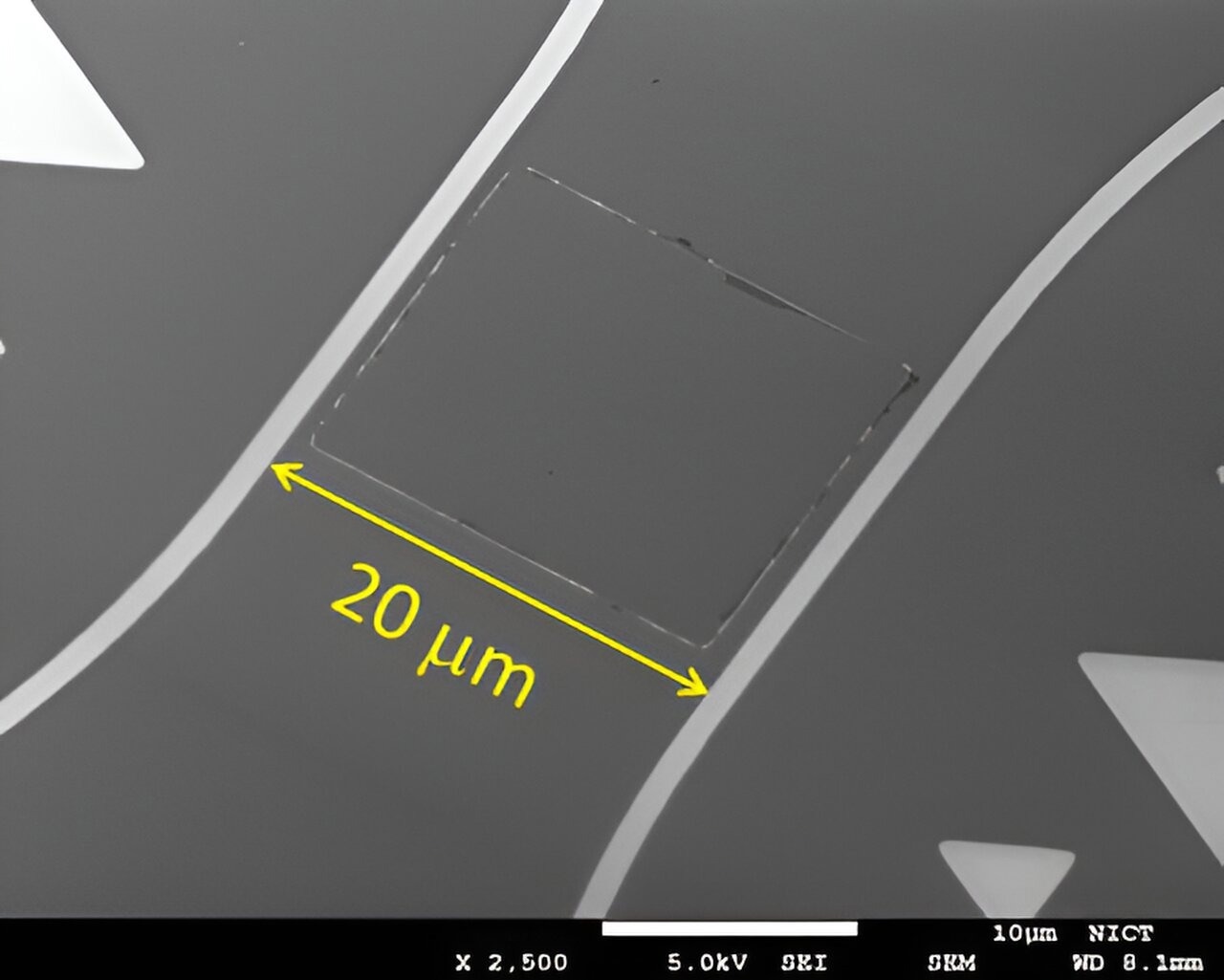Researchers from the National Institute of Information and Communications Technology developed the world’s first Superconducting Wide-Strip Photon Detector (SWSPD) by inventing an innovative structure in a superconducting strip photon detector that facilitates extremely accurate photon detection even with a wide strip.
 Developed Superconducting Wide-Strip Photon Detector (SWSPD). Image Credit: National Institute of Information and Communications Technology (NICT)
Developed Superconducting Wide-Strip Photon Detector (SWSPD). Image Credit: National Institute of Information and Communications Technology (NICT)
The detector’s strip width surpasses 200 times the width of traditional Superconducting NanoStrip Photon Detectors (SNSPDs). The issues of polarization reliance and low productivity present in traditional SNSPDs can be addressed with the use of this technology.
The new SWSPD is anticipated to be used for several innovative technologies, including quantum computers and quantum information communication, allowing for the early social adoption of these innovative developments.
Optica Quantum published the study.
The strategic core technology of photon detection is enabling innovations in a wide range of high-tech fields, such as deep space optical communication, laser sensing, live cell fluorescent observation, and quantum computing and information communication, which are presently the subject of intense global research and development.
The research team at NICT has created an SNSPD with a strip width of no more than 100 nm, which has effectively outperformed previous photon detectors in terms of performance. By utilizing the device in quantum information communication technology, its value has been shown. However, to fabricate SNSPDs, sophisticated nanofabrication technology must build nanostrip structures, which affects productivity growth and results in differences in detector performance.
Furthermore, the superconducting nanostrip meandering structure’s polarization dependence has restricted the device’s potential applications as a photon detector.
In this work, NICT developed a new structure known as the ‘High Critical Current Bank (HCCB) structure,” which allows for highly efficient photon detection even when the superconducting strip photon detector's strip width is widened.
Additionally, NICT developed a 20-micrometer-wide SWSPD, which is more than 200 times wider than a conventional nanostrip photon detector, and it achieved high-performance operation for the first time in history.
For the type of nanostrip that NICT created, incredibly long superconducting nanostrips with a meandering shape and a strip width of 100 nm or less were needed. It is now possible to produce the wide strip type using just one short, straight superconducting strip.
Highly productive general-purpose photolithography technology can be used to create this SWSPD, negating the need for nanofabrication technology. Additionally, the polarization dependence observed in the nanostrip-type detector can be eliminated since the strip width is greater than the incoming light spot irradiated from the optical fiber.
In the telecommunication wavelength range (λ=1,550 nm), the detector’s performance evaluation revealed a 78% detection efficiency, which is similar to the 81% of the nanostrip type. In addition, the timing jitter outperformed the nanostrip type in terms of numerical values.
This development makes it possible to produce photon detectors that are more productive, perform better, and have better features than those of the nanostrip type, which has been positioned as a crucial photon detection technology in cutting-edge domains like quantum information communication.
It is anticipated that this technology will be used in a variety of quantum information and communication technologies and that it will serve as a fundamental technology for networked quantum computers, which are the subject of JST Moonshot Goal 6.
The researchers plan to investigate the HCCB structure in the SWSPD further to identify photons with high efficiency throughout a broad wavelength range, ranging from the visible to the mid-infrared, in addition to the telecommunication wavelength band.
To expand the applications for laser sensing, live cell observation, deep space optical communication technology, and other areas, they will also attempt to increase the size of the photon receiving area.
Journal Reference:
Yabuno, M., et al. (2023) Superconducting wide strip photon detector with high critical current bank structure. Optica Quantum. doi:10.1364/OPTICAQ.497675